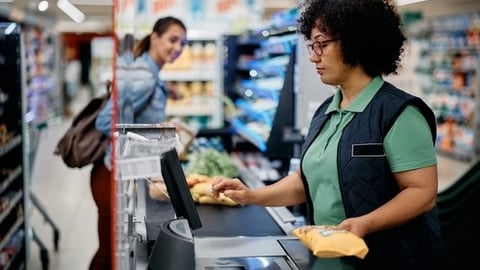OP-ED: Why Consumers Can’t Wait for Government to Fix Grocery Prices
Grocery prices are hitting families hard, and while politicians debate solutions, the truth is that relief isn’t coming any time soon. Food costs keep climbing, and waiting for the government to step in won’t make grocery bills any cheaper in the near future. Shoppers need to take control of their spending now.
We’ve been told that inflation and supply chain issues are the main reasons that groceries are expensive. Yet in reality, food prices are shaped by a lot more, including factors like retailer pricing tactics, changing consumer habits and the massive amount of annual food waste. While policymakers work through long-term plans, people need real and practical ways to save money today.
[RELATED: How Giant Food Protects Shoppers From Rising Grocery Costs]
Why Waiting for Government Solutions Is Unrealistic
At first glance, inflation seems to be the top driver for grocery price volatility, but it’s more about the inefficiencies that are baked into our current food system. Policy changes take time to pass and even longer to make an impact, yet the factors driving up grocery bills today aren’t issues that government intervention alone can fix. Even recent economic policies aimed at bringing down inflation have failed to bring meaningful relief to grocery store aisles, proving that consumers can’t rely on political solutions to solve an immediate financial problem.
Instead of waiting for prices to drop, shoppers should focus on the strategies they can control. Simple things like understanding labels, proper food storage, reducing food waste and making informed shopping decisions can help families stretch their budgets rather than wait for relief that may never come.
How Shoppers Can Take Control of Their Grocery Bills
While shoppers can’t control the economy or fix supply chain issues, they can take charge of where and how they shop. A smart way to cut costs is by turning to surplus and discount grocers. These stores sell high-quality, brand-name products at steep discounts simply because they were overproduced, have old packaging or are nearing a “best by” date. The food is still perfectly good, and shopping this way helps families save money while also keeping food from going to waste.
[RELATED: Inside the Value Boom Happening in Grocery]
Another great way to save is by buying fresh produce from local markets. In-season fruits and vegetables tend to taste better and are actually cheaper without the extra supermarket costs of long-distance shipping and storage. Buying from local farmers is also a great way for consumers to support small businesses and keep more of their food dollars within the local community.
Food waste is one of the biggest reasons that grocery bills add up faster than they should, but a little planning can go a long way. Cooking extra portions to freeze for later, storing perishables correctly so they last longer and getting creative with leftovers can help stretch meals further. Small changes like these make it easier for consumers to get the most out of every grocery trip while keeping more money in their pocket.
How Small Shifts Can Make a Big Impact
The choices we make at the grocery store not only affect our own budgets but also influence the entire industry. When consumers prioritize affordability and smarter spending, retailers notice. Over time, that demand helps drive more cost-effective options and results in better pricing for everyone.
Consumers “vote with their dollars” every time they make a purchase. Choosing to shop locally, supporting discount and surplus retailers, avoiding brands that contribute to food waste, and small actions like composting or growing veggies or herbs at home can help shift market demand. While government policies take years to unfold, individual choices start making an impact right now.
Food waste is a major factor in rising grocery costs, but it’s something that shoppers can help control. When less food is wasted throughout the supply chain, retailers don’t have to offset those losses by raising prices. Being more mindful about how we shop creates a ripple effect that makes the system more efficient and keeps costs down for all of us.
Understanding food labels is another simple yet powerful way to save. Misinterpreting “best by,” “sell by” and “use by” dates leads to millions of pounds of perfectly good food being thrown away each year. Learning the difference can help shoppers avoid unnecessary waste and spending.
Looking Ahead
Consumers can’t afford to wait for policymakers to lower grocery prices. While government solutions may take shape in the future, the most effective way for individuals to cut costs is by making smarter shopping decisions today.
By understanding food labels, shopping surplus and discount options, buying seasonally, and reducing food waste, shoppers can take control of their grocery bills while driving real change in the industry – proving that every dollar spent (or saved) is a vote for a smarter, more sustainable food system. Waiting for relief isn’t an option, but taking action is something that every shopper can do right now.






